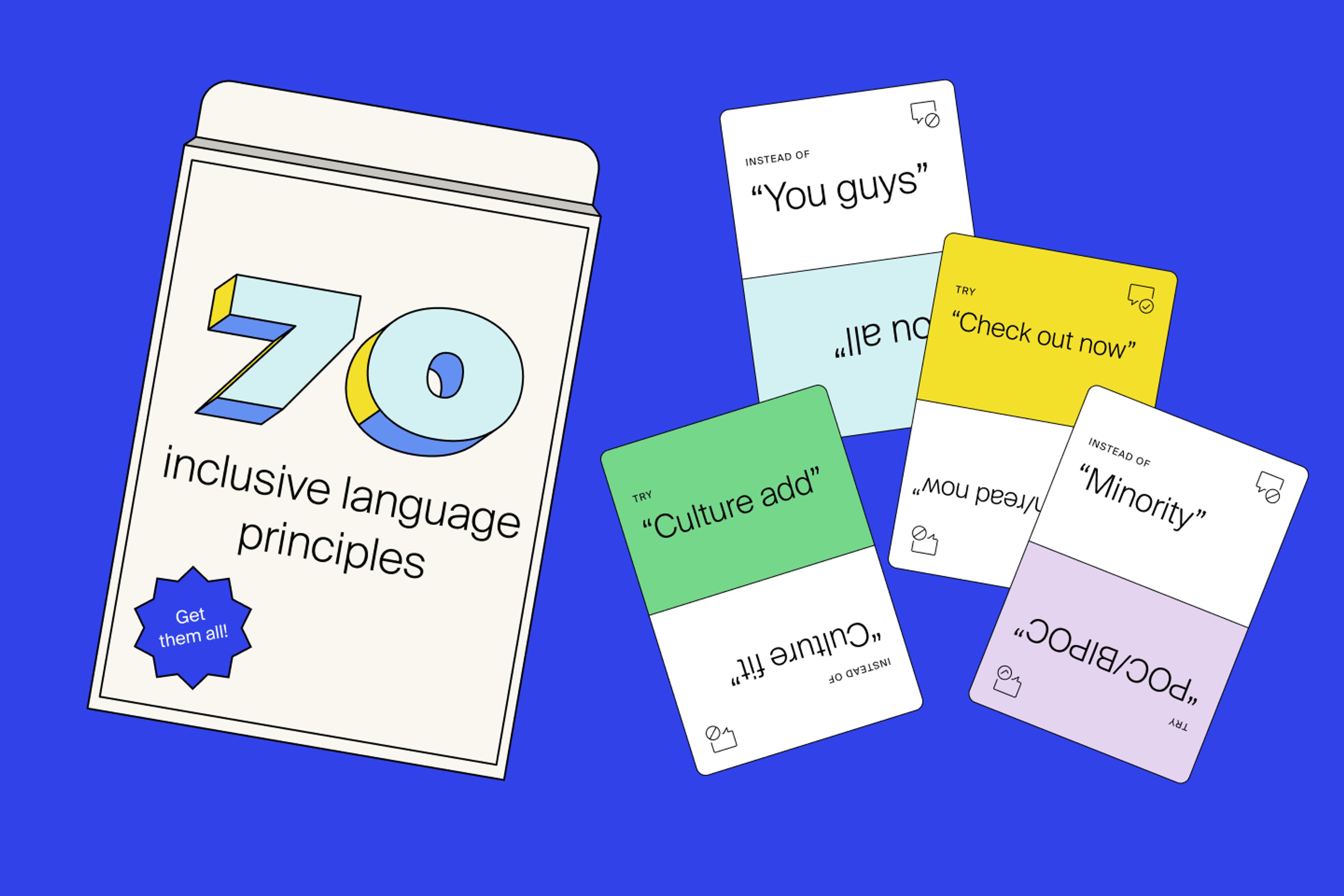The early career recruiting strategy you’re using today is foundational to diversifying your teams for years to come.
Employers that use Handshake to cast a wider net across more school partners, and meet students and recent grads across the US, are accessing a diverse pool of qualified early talent. A message sent on Handshake can open the door to people from any background, anywhere.
But how do you know if you’re effectively engaging underrepresented students and recent grads to expose them to opportunities at your company?
How do I message students from underrepresented groups?
Use these eight tips to ensure your messages welcome early talent from underrepresented groups to your brand, to your recruiting process, and to the exciting beginning of their careers.
1. Do: use inclusive language
When you’re writing messages, you want the recipient to feel psychologically safe, respected, engaged, motivated, and valued. The best way to check yourself is to ask: Would I feel like I belonged at this company if I got this message?

2. Do: introduce students to people who can expand their network
A Handshake survey found that while 24% of white students have many people in their network who can help them identify a career path, the same is true for only 17% of Black students, 15% of Hispanic/Latine students, and 13% of Asian students1. Consider the impact you could make by introducing a student from an underrepresented group to someone from your company who could be a resource during their job search.
Advocates on Handshake are typically alumni, department heads, former interns, or recent hires. Connect your advocates through messages to candidates, where they can share their excitement about your organization, answer questions, and so on.
3. Don’t: impose unnecessary requirements
Keep in mind that students may have had unequal access to resources throughout their education, may be working full-time while they’re in school, or may face other barriers. Don’t screen out talent based on one metric like GPA—screen in talent based on everything they can bring to the table. Encourage applications by recruiting year-round, and being clear in your message about application materials, timelines, and next steps.
4. Do: recognize individual interests and achievements
Imagine how “seen” you can help a student feel by referencing in your message that you noticed they’re in a specific sorority or club, or that you had the same major as them. Review students’ profiles before reaching out and reference these meaningful details in your message. You can consider drawing a connection between a student’s interests and ways for students to get involved in specific projects, groups, teams, or volunteering efforts at your company.
You can source candidates on Handshake from student organizations (e.g., Society of Hispanic Professional Engineers), types of institutions (e.g., HBCUs), and more with additional advanced filters. Learn more.
5. Don’t: make assumptions about a candidate’s background
Students from underrepresented groups have individual identities. For example, although 70% of Latin[e] students are first-generation, that doesn’t mean every Latine student is a first-generation college student. Treat students as individuals—don’t use generalizations or language that stereotypes.
Tip: Avoid phrases like, “Looking for Black students for our STEM internship” or “Latine women are invited to apply.”
6. Do: reach out proactively ahead of fairs and events
In spring 2023, 65% of virtual fair attendees were students of color. And Handshake survey data found that 66% of students are more likely to attend an event if they receive a message from the employer2. Whether your upcoming event or fair is virtual or in-person, message students in advance and invite them to engage with you or another representative from your company who will be at the event.
Handshake survey data revealed that about 3 in 4 students say input from friends and alumni who currently work at the company is a moderately or very valuable resource in their job search. Inviting former interns to speak and network at events is one way to show students from underrepresented groups potential career paths post-grad3.
7. Do: personalize your message
While any employer on Handshake can message early talent, upgraded accounts have access to messaging Campaigns with dynamic variables that can be used to personalize messages. So you can simultaneously leverage Handshake to grow your school partnerships and cast a wider net to source and attract students from underrepresented groups—while gaining the ability to reference a student’s name, major, and school in your message to personalize messages at scale.
According to Handshake survey data, 50% of students are more likely to reply to a message that's personalized to them and their interests, and this is even more true for women (53%).
8. Do: communicate your commitment to DEI
Highlight how your company is investing in DEI by building a message template that includes info about your Employee Resource Groups/Affinity Groups, mentorship opportunities, or your representative leadership team. Another idea is to create a message template inviting students to check out your Company Profile on Handshake and see photos, read testimonials, and watch videos so they can get a better feel for your culture and get a sense of belonging. Showing that your company is prioritizing diversity and inclusion, and doesn’t just talk about it, is important for candidates to feel truly welcome.
Tip: Research has found that words suggesting inclusivity and collaboration increase the number of women applicants to STEM roles, while words with more intense connotations typically decrease these applications.
Get intentional about your messaging strategy, see results in your pipeline
It’s important to communicate with students from underrepresented backgrounds so that they feel valued and appreciated for their unique experiences and skills, and welcomed to explore careers at your organization. These suggestions for writing more engaging messages on Handshake can help you develop authentic, meaningful relationships with students from a wide variety of backgrounds.
